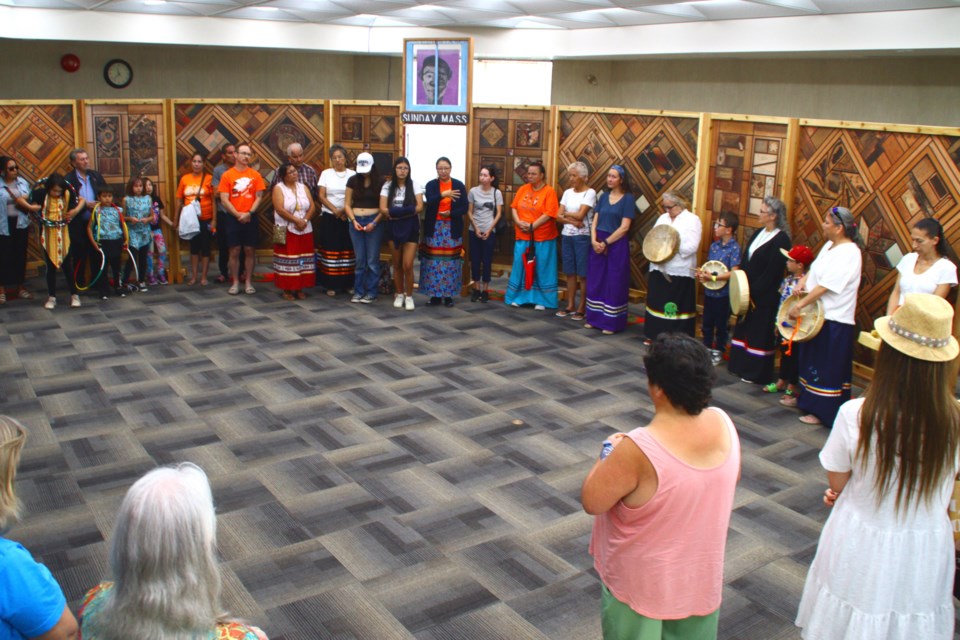After six weeks on public display at Flin Flon City Hall, the Witness Blanket replica exhibit has been taken down. A closing ceremony was held July 22 to pay tribute to the exhibit and the lessons it teaches, as well as to pay tribute to culture and tradition that survived past - and in spite of - residential schools.
The ceremony included opening and closing prayers in both Cree and English, performances by the Nemihitowok Hoop Dance Troupe and the Northern Lights Women Singers and one last public trip from Pioneer Square to City Hall to take in the exhibit before it closed.
By the end of the final ceremony, over 1,000 people had been in to see the exhibit during its time at City Hall. A total of 45 volunteers put in 280 hours watching over the blanket while it was open for public viewing.
Following that last look at the exhibit, attendees went back to Pioneer Square for final prayer and a pipe ceremony.
Those in attendance shared their reflections and thoughts on the exhibit and the historical record it presents - one that, for so long, was not taught in Canadian schools and to students Indigenous and non-Indigenous alike.
“I graduated in 2009, from Hapnot Collegiate. We never learned anything about residential school. It wasn’t taught, even then, in schools like it is now,” said co-organizer and director of the NorVA Centre Megan Dupas during the final ceremony.
“What I learned about residential school was on my own time, after I graduated, especially after learning that my great-grandma was at a residential school. I still don’t really understand how they could to that to children.”
The blanket exhibit opened to the public for the first time in Flin Flon June 11 and was open for public viewing most days. The exhibit shows dozens of artifacts, photographs and stories of the Canadian Indian Residential School system, covering the decades-long span in which the schools operated.
Showcasing an exhibit that showed the human cost of the schools and their effects on the children who went through them was key for local leaders, who reflected on the blanket’s presence.
“I wanted to mention that it was really an honour for the City of Flin to partner with the NorVA Centre to help bring the Witness Blanket exhibit up here,” said city councillor Steve Lytwyn.
“It was very, very humbling, because this is council chambers - we do have our regular meetings here, two per month. To be in the presence of the Witness Blanket during those is very humbling.”
Knowledge of what happened in residential schools and the long-lasting trauma they caused is becoming more widespread - something Dupas said is a good thing that can prevent something similar from ever happening again.
“I’m very happy that kids are learning and it’s becoming more common now to learn about residential schools. All of our local educators were very onboard with this project from the get-go,” said Dupas.
“When you see the sign that shows you how many schools there were, that provides so much more insight to me - you can see the sheer number. You can see, for the government, how much time and money and resources went into the schools, knowing what they were doing to children… they dehumanized Indigenous children. That’s the only way you can do that to children, if you don’t see them as being human.”
“Part of coming together around this subject is ensuring that this never happens again,” she added.




